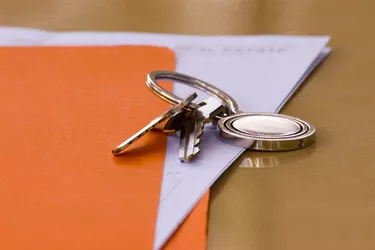- Land intake sheet

Quit claim deeds are used when one party, called a grantor, transfers his interest in property to another person, called a grantee. A quit claim deed does not guarantee that the original owner actually has ownership in the property and this should be verified by the grantee. Once the quit claim deed is properly filled out, it can be recorded in the Maryland county where the house or land is located.
Video of the Day
Video of the Day
Step 1
Contact the finance office or treasurer in the Maryland county where the property is located and ask if there is a quit claim deed form you can pick up or download. You can also purchase a blank quit claim deed from your local office supply store. Also inquire whether your county requires any special process during the quit claim process. Each Maryland county has a different process and you may be required to have your quit claim deed reviewed prior to it being recorded.
Step 2
Complete the quit claim deed. The quit claim deed form will ask for the legal name of both the grantor and grantee as well as the legal property address. You can find the legal address on your property tax statements. Once the form is completed, have it notarized.
Step 3
Pick up a land intake sheet from your local circuit courthouses in the Maryland county the property is located in. Either the grantor, grantee or an attorney must complete the form per Maryland law. The intake sheet must then be signed by the person who completed the form and have it notarized. (See Resources.)
Step 4
Take the completed quit claim deed and land intake sheet to the court clerk in the Maryland county that the property is located in. You may be required to pay recording fee, taxes and surcharges. The fees will vary depending on the specific circumstances of the property you are conveying. Contact the circuit court to get the fees you will be required to pay.